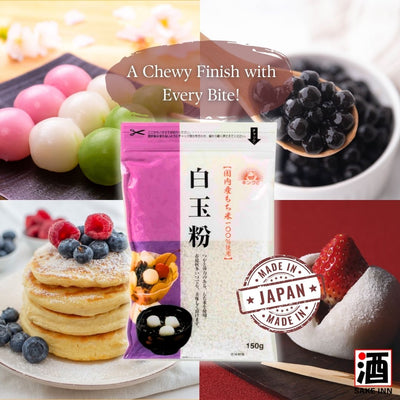Sake Guide
You don’t have to be a sommelier to enjoy sake, but you can create a new dimension to your enjoyment by exploring the complex flavour and aroma profiles that differ by sake grade, prefecture, rice, water, climate and brewing technique.
🍶 Sake Classification Chart

There are four basic types of sake known as Special Designation Sake '特定名称酒', and each requires a different brewing method. Naturally, there are other special brewing techniques that are less common, but the four basic sake types are:
- Junmai Daiginjyo / Daiginjyo (highly milled rice, with or without added alcohol)
- Junmai Ginjyo / Ginjyo (milled rice, with or without alcohol added)
- Tokubetsu Junmai / Junmai (pure rice only, no adding of distilled alcohol)
- Tokubetsu Honjyozo / Honjyozo (mostly uses distilled alcohol)
🍶 Polishing ratio of Sake Brewing Rice

The rice-milling ratio shows how much of the rice surface is removed from a Genmai. For instance, when the ratio is 40%, 60% of the brown rice surface is polished away. (refer to 3rd grain from left)
Sake with a polishing rate of 50% or less is known as Junmai Daiginjo and Daiginjyo. 55% or less is called Junmai Ginjyo and Ginjyo sake, and 65% or less is known as Tokubetsu Junmai and Junmai sake. Hence, the more the rice is polished the stronger the aroma and more delicate the flavour.
🍶 Sake Meter Value

To decide whether each sake is dry or sweet, the Sake Meter Value (SMV) is used for measurement. The SMV measures the density of sake compared to water. As shown in the chart, the higher the positive number is, the drier the sake becomes, and the lower the negative number is, the sweeter the sake gets.
Together with the SMV, acidity level is used to determine the characteristics of each sake. The higher the number the richer the sake becomes, and the lower the number the lighter.
🍶 Sake Brewing Process

🍶 Storage and Handling of Sake
- Sake tastes best when it's fresh
Unlike wine, sake is perishable. It usually has no sulfites or preservatives. The rule of thumb is that an unopened bottle of sake is good for about 1 year after the bottling date on the label or cap.
In general, sake is not brewed to age like wine. It's more like beer in that sense. So, the sooner you consume it, the better tasting experience you'll enjoy.
- Keep Sake in a cool place & out of light
The heat will badly affect the taste and quality of the sake. Choose a storage area where the temperature stays below 68°F (20°C). Once opened, a sake should be kept in the fridge and consumed within days. Also, both sunlight and fluorescent light should be avoided to keep the taste of the sake intact.



















